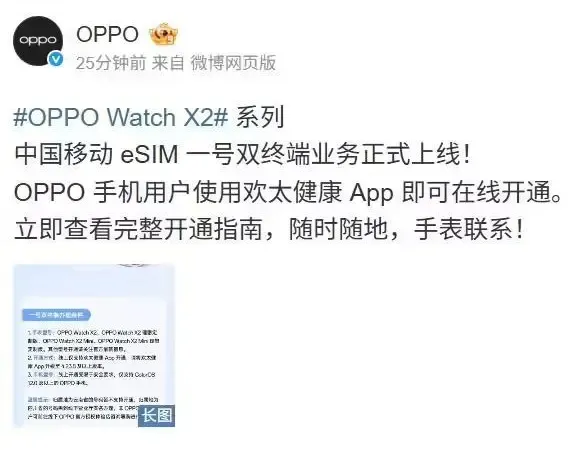After months of anticipation, recent developments confirm that eSIM support for smartphones in China is finally becoming a reality.
🔓 China Unicom Launches eSIM Activation Portal for Smartphones
China Unicom has quietly launched an online portal for mobile eSIM services, signaling a major step toward full-scale adoption. Though detailed activation procedures are not yet publicly available, the platform marks the first official move to bring eSIM functionality to smartphones in the domestic market.
According to China Unicom’s announcement, first-time users must visit an official Unicom service hall in person. Remote or at-home activation is not yet supported, and cooperative partner halls are currently excluded. Returning users may fill out their information online for reactivation.
Earlier this year, Unicom also collaborated with ZTE to launch a cloud tablet powered by eSIM, further demonstrating the operator's renewed investment in this technology. In April 2025, China Unicom briefly tested an iPhone-compatible eSIM activation page, which was taken down shortly afterward—hinting that internal readiness is progressing quickly.
Currently, China Unicom has reinstated eSIM services in 25 provinces, municipalities, and autonomous regions, including Beijing, Tianjin, and Hebei.
📶 China Mobile Relaunches eSIM Dual-Terminal Services
China Mobile is also back in the eSIM game. It has begun rolling out eSIM "one number, two devices" support, with the OPPO Watch X2 series as the first compatible device.
According to OPPO, eligible devices must run ColorOS 12.0 or above and be paired with the latest version of the HeyTap Health App (v4.23.8 or later). Currently, Yunnan province numbers are not supported, and users in Sichuan must complete real-name authentication in person.
With eSIM enabled, the smartwatch can function independently—allowing users to make calls, use WeChat, or make contactless payments even when the phone is not nearby. One number, one data plan, two devices—perfect for joggers, pet walkers, or anyone on the go.
This strategic return to wearable eSIM services is a strong signal that eSIM support for smartphones is just around the corner.
📲 iPhone & Huawei to Lead China into the "Card-Free" Era
On the device front, industry insiders report that Apple’s upcoming iPhone 17 Air will rely entirely on eSIM due to its ultra-thin 5.5mm design. Its expected launch in China would require nationwide eSIM provisioning—great news for domestic eSIM adoption.
Huawei is also rumored to support eSIM in its upcoming Mate XTs tri-fold model, while Xiaomi’s first eSIM-enabled flagship, the 15 Ultra, is currently targeted at overseas markets.

🔐 Overcoming Past Challenges: Security & Policy Updates
Historically, China has taken a cautious approach to eSIM adoption due to security concerns, including encryption standards and user protection. In 2023, the Ministry of Public Security reported a 37% YoY increase in telecom fraud using remote eSIM activation.
In July 2023, all three major operators paused new eSIM registrations, citing security gaps as the main reason. Since then, significant technological advancements have been made in encryption, authentication, and fraud prevention.
⚙️ eSIM Ecosystem in China Gains Momentum
China’s eSIM value chain is rapidly maturing. The ecosystem now includes:
Chipmakers: Unisoc, ASR Microelectronics
Module Manufacturers: Quectel, Fibocom
Platform Providers and
Telecom Operators
These companies support a broad range of IoT devices, with eSIM modules already widely deployed in smart meters, asset tracking, and smart city applications.
🌐 Market Outlook: Billion-Scale Opportunity
According to GSMA, by the end of 2025, over 1 billion smartphones will use eSIM globally, growing to 6.9 billion by 2030, representing 75% of smartphone connections.
In the IoT sector, eSIM-enabled connections are expected to surge from 22 million in 2023 to 195 million by 2026.
Yang Guang, a telecom strategy analyst at Omdia, commented:
“For China’s operators, restarting eSIM services is a strategic move. The global eSIM trend is gaining momentum—especially in IoT and AI-integrated applications. Resuming eSIM operations not only aligns with market demand but enhances long-term competitiveness.”
✅ The relaunch of eSIM in China marks a pivotal moment in the evolution of mobile connectivity—ushering in a future where identity, communication, and devices become more seamless than ever before.
This paper is from Ulink Media, Shenzhen, China, the organizer of IOTE EXPO (IoT Expo in China)



















